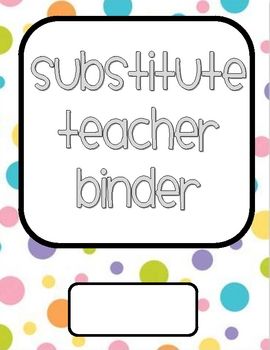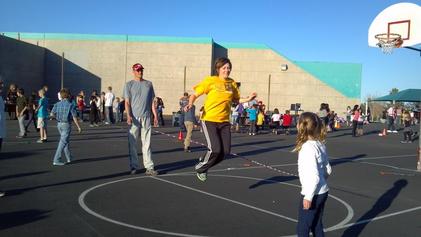|
If you have to read text out loud to accommodate students with special needs. Leave a word out once in awhile and have the class echo it in. It helps keep the students on task.
0 Comments
Know when to relax. Your job is to teach and for your students to learn, however there are times to relax and do fun things. The time around holidays is one of those times. Plan activities that still have educational value, but may also relate to the holiday and provide a little fun. Although Halloween is my least favorite holiday, I do a math activity called “Spooky Digits” that explores odd patterns in math that grab students attention and get them to excited about math in a different way.
The first snowfall, or hint of snowflakes in the air, will bring about incredible levels of excitement in your students and you will have difficulty keeping them focused. I just thought you might want to know that in advance.
(Guess what is doing here today?) Sometimes an inappropriate word comes up unexpectedly, such as when looking up a work in a dictionary. If you make a big deal about it the kids will too. Kids will follow your lead, you make a big deal and they will too. You may calmly respond and explain there are words in our world that are not appropriate in school that we may come across, when that happens we will go on and not make a big deal over them.
Always keep a student list handy for checking off names. Sometimes you just need a quick way to narrow down a group of students or keep track who brought in money for a fundraiser or activity.
When reading a book out loud to the class, use voice inflections and different voices for characters. No one enjoys monotone reading. The students will become more engaged in the story and are more likely to remain focused.
Set up a sub folder that includes a class list, a seating chart, and a short list of students you can trust. Put these materials in a highly visible area in the event you are not able to come in to set up your sub plans. Also include sets of assignments for the sub so they can cover a day or two without you coming in.
To address little behaviors, such as lack of attention or talking, you can sometimes use the name of the student in mid sentence to draw them back without having to interrupt the flow of the lesson. Ex. If Jack wanted to add these numbers he would make sure he lined up the place values. Jill would use her green crayon to color the tree like this.
Keep a daily log of behaviors or situations that occur in the classroom. You may need to refer it to it later to see if there is a pattern in behaviors.
When assigning classroom materials and textbooks. Give students a student number and give them the same numbered materials for EVERYTHING. It makes it easier to pass materials out and it also allows you to more easily monitor if one student has a tendency to damage materials.
When inclement weather causes recess to be indoors, be prepared. Establish behavior expectations in advance and explain what activities students may choose. You may choose to have some activities that designated as indoor recess activities only. If you have a very active class, prepare some fun worksheets and assign to half the class for one recess and the other half of the class for a second recess.
Have emergency sub plans for your class set up in advance for emergency situations where you cannot be in the classroom. Include class sets of activities that do not need copied. Put the plans in 3 ring binders and label by subject. It is wise to have several activities for each subject and some time filler ideas. Make sure to include your class list, schedule for each day, seating chart, and any special notes, such as students who leave at special times.
Exaggerate things to make learning fun. Be sure your students know you are exaggerating and are not believing your tall tale. Don't overuse this strategy, but it can make learning fun when used once in awhile.
Keep the class rules simple. You don’t need to have a long list that details every possible issue. Most things will fall under a list of rules that are only 4 or 5 long. My school uses a concept called the 4B’s; Be Safe, Be Respectful, Be Responsible, Be Ready to Learn. Most issues that come up in the classroom can fit under one of these.
Contributions to http://the-pencil-box.wikispaces.com/ are licensed under a Creative Commons Attribution Share-Alike 3.0 License. Set up a sub folder that includes a class list, a seating chart, and a short list of students you can trust. Put these materials in a highly visible area in the event you are not able to come in to set up your sub plans. Also include sets of assignments for the sub so they can cover a day or two without you coming in.
Establish routines within your day. Some students feel more secure and comfortable knowing that things will happen in a certain order. Many students do not have order and routine at home, so this is also a life skill that is being introduced. Within this context, there are times when you will have to flex from the routine for events that are scheduled or sometimes just because you need another 5 or 10 minutes to complete another lesson. However, establishing a routine can be a great tool to help you build security in your students and help you to be more efficient as a teacher.
Establish a system for getting your students attention in noisy situations. Some ideas are raising and holding your hand high, count down from 5 (at a reasonable rate), clap rhythm. Make sure the expectations are that it will be quiet by the end of the claps or countdown. Kids pick up on this routine very quickly.
On the day when you have school pictures, ask the photographer to not hand out combs to all the students. This usually becomes a management nightmare as you will have some students snap a comb on someone, or someone else will try to use the teeth of the comb as a musical instrument. Save yourself some grief and skip the comb. If a child is in dire need of some hair correction, put some strong parameters in place such as the comb having the comb returned to you immediately.
Use wait time in your questioning. Students will figure out that you will pass on them in 2 to 3 seconds if they don’t respond….. and they will wait it out. Beat them at their game.! There is no "magic" number, but up to 10-15 seconds is appropriate if needed. This may also depend on the subject matter. However, be cautious with students who honestly struggle and provide cues if needed. Too much wait time can also cause embarrassment.
Photo by: Contributions to http://stacycarpenterportfolio.wikispaces.com/ are licensed under a Creative Commons Attribution Share-Alike 3.0 License Get in the game! Shoot a basket, catch & throw a football, jump a rope, etc. with your students. It takes 30 seconds, but it can go a long way in building relationships with your students. Sometimes they want you to continue playing with them. Use your judgement to determine if you can be involved with the activity and monitor students under your supervision on the playground. |
ARTHUR BROOD TEACHER
|



 RSS Feed
RSS Feed